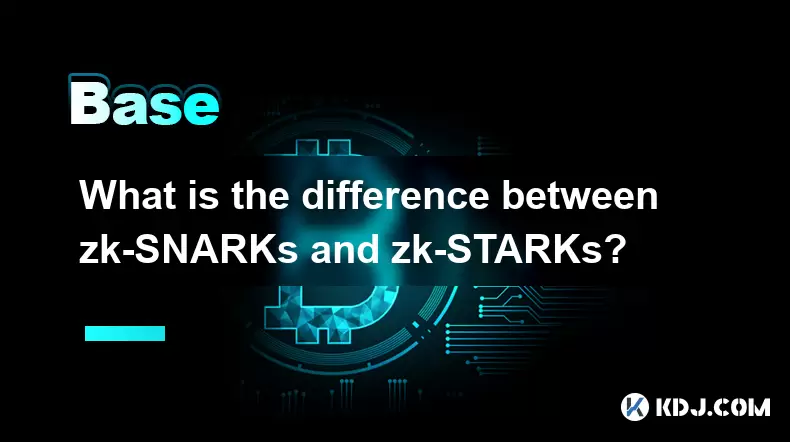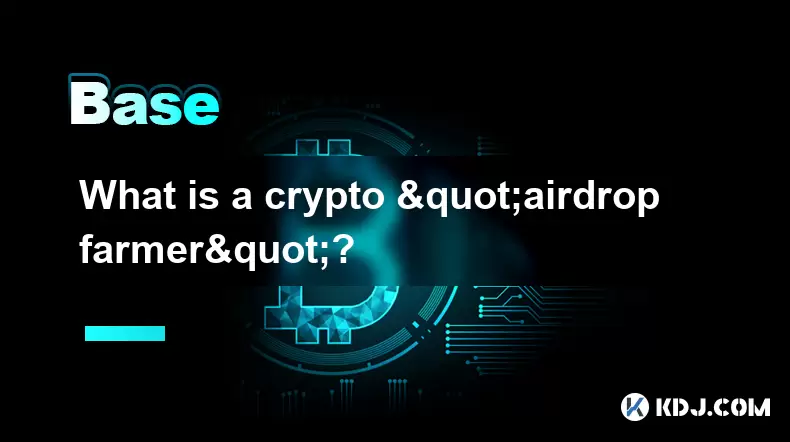-
 Bitcoin
Bitcoin $117600
0.81% -
 Ethereum
Ethereum $3740
2.85% -
 XRP
XRP $3.144
1.82% -
 Tether USDt
Tether USDt $1.000
-0.02% -
 BNB
BNB $783.9
2.87% -
 Solana
Solana $186.4
3.29% -
 USDC
USDC $0.0000
0.01% -
 Dogecoin
Dogecoin $0.2366
4.34% -
 TRON
TRON $0.3171
1.43% -
 Cardano
Cardano $0.8233
3.00% -
 Hyperliquid
Hyperliquid $44.24
6.38% -
 Sui
Sui $3.973
9.32% -
 Stellar
Stellar $0.4373
4.45% -
 Chainlink
Chainlink $18.36
4.93% -
 Hedera
Hedera $0.2662
12.25% -
 Bitcoin Cash
Bitcoin Cash $557.3
6.22% -
 Avalanche
Avalanche $24.05
3.14% -
 Litecoin
Litecoin $112.8
2.67% -
 UNUS SED LEO
UNUS SED LEO $8.994
0.20% -
 Shiba Inu
Shiba Inu $0.00001403
5.07% -
 Toncoin
Toncoin $3.211
4.17% -
 Ethena USDe
Ethena USDe $1.001
-0.02% -
 Uniswap
Uniswap $10.48
6.16% -
 Polkadot
Polkadot $4.110
4.03% -
 Monero
Monero $324.8
-1.64% -
 Dai
Dai $1.000
0.00% -
 Bitget Token
Bitget Token $4.571
0.92% -
 Pepe
Pepe $0.00001260
5.52% -
 Aave
Aave $297.3
4.47% -
 Cronos
Cronos $0.1321
4.62%
What is the difference between zk-SNARKs and zk-STARKs?
Zero-knowledge proofs like zk-SNARKs and zk-STARKs enhance blockchain privacy and scalability, with STARKs offering greater transparency and quantum resistance.
Jul 22, 2025 at 05:36 am

Understanding Zero-Knowledge Proofs
In the world of cryptocurrencies and blockchain technology, privacy and scalability are two critical challenges. Zero-knowledge proofs (ZKPs) offer a promising solution by enabling one party to prove to another that they know a value or secret without revealing the actual information. Two of the most prominent types of zero-knowledge proofs are zk-SNARKs and zk-STARKs. While both aim to enhance privacy and efficiency, they differ significantly in their underlying cryptographic principles and performance characteristics.
What Are zk-SNARKs?
zk-SNARKs stands for Zero-Knowledge Succinct Non-Interactive Argument of Knowledge. This protocol allows a prover to convince a verifier that they possess certain information without disclosing the information itself. The key features include:
- Succinctness: The proof size is small and quick to verify.
- Non-interactivity: It doesn’t require back-and-forth communication between prover and verifier.
- Zero-knowledge: No information about the input is revealed.
zk-SNARKs are used in privacy-focused cryptocurrencies like Zcash to enable shielded transactions. However, they rely on a trusted setup, which is a significant drawback. During this setup, a set of cryptographic parameters is generated, and if the setup is compromised, attackers can forge proofs.
What Are zk-STARKs?
zk-STARKs, which stands for Zero-Knowledge Scalable Transparent Argument of Knowledge, are an evolution of ZKP technology. Unlike zk-SNARKs, zk-STARKs are transparent and do not require a trusted setup. Instead, they rely on collision-resistant hash functions, which makes them more secure against quantum attacks.
Some of the standout features of zk-STARKs include:
- Transparency: No trusted setup is needed.
- Scalability: Proofs can be generated more efficiently for large computations.
- Quantum resistance: They are built on hash-based cryptography, which is considered more secure in a post-quantum world.
These properties make zk-STARKs particularly appealing for applications requiring high levels of security and decentralization, such as layer-2 scaling solutions for Ethereum.
Key Differences Between zk-SNARKs and zk-STARKs
The main differences between zk-SNARKs and zk-STARKs lie in their cryptographic foundations, performance, and trust assumptions.
Trusted Setup vs. Transparency: zk-SNARKs require a trusted setup phase, which can be a security vulnerability if not executed properly. In contrast, zk-STARKs are transparent and do not require any trusted setup.
Proof Size and Verification Time: zk-SNARKs generate smaller proofs and have faster verification times, which makes them suitable for blockchains with limited data capacity. zk-STARKs, however, produce larger proofs but are faster to generate for complex computations.
Quantum Resistance: zk-SNARKs rely on elliptic curve cryptography, which is vulnerable to quantum computing attacks. zk-STARKs use hash functions, which are considered quantum-resistant.
Scalability: zk-STARKs are more scalable due to their ability to handle larger computations efficiently, making them ideal for high-throughput applications.
Use Cases and Applications
Both zk-SNARKs and zk-STARKs are used in the blockchain ecosystem to improve privacy and scalability. However, their use cases differ based on their characteristics.
zk-SNARKs are widely used in privacy coins like Zcash and in decentralized identity systems where small proof sizes and fast verification are crucial.
zk-STARKs are gaining traction in layer-2 solutions such as StarkWare, which builds scalable and private infrastructure for Ethereum. Their transparency and scalability make them ideal for applications where trust minimization and performance are key.
Additionally, zk-STARKs are being explored for decentralized finance (DeFi) and supply chain tracking, where data integrity and computational efficiency are essential.
Performance and Trade-offs
When comparing the performance of zk-SNARKs and zk-STARKs, several trade-offs emerge.
Prover Time: zk-STARKs generally have a faster prover time for complex computations, which is beneficial for applications involving large datasets.
Verification Time: zk-SNARKs offer faster verification times, which is advantageous for blockchains with limited on-chain computation capacity.
Storage Requirements: zk-STARKs generate larger proofs than zk-SNARKs, which can be a concern for systems with limited storage space.
Security Assumptions: zk-STARKs are considered more secure due to their reliance on well-established hash functions, while zk-SNARKs depend on cryptographic assumptions that may be vulnerable to future advances in computing.
Frequently Asked Questions
Q: Can zk-SNARKs and zk-STARKs be used together in a system?
Yes, hybrid systems can utilize both protocols depending on the use case. For instance, zk-SNARKs can be used for fast verification in constrained environments, while zk-STARKs can be used for large-scale computations requiring transparency.
Q: Why is the trusted setup a concern for zk-SNARKs?
If the initial parameters are not securely destroyed, malicious actors could generate fake proofs. This undermines the entire system's integrity and trustworthiness.
Q: Which is more suitable for Ethereum scaling?
zk-STARKs are increasingly favored for Ethereum scaling due to their scalability, transparency, and compatibility with smart contracts.
Q: Are zk-STARKs completely immune to quantum attacks?
While they are more resistant than zk-SNARKs, no cryptographic system is 100% immune. However, the hash-based design of zk-STARKs makes them significantly more resilient to quantum threats.
Disclaimer:info@kdj.com
The information provided is not trading advice. kdj.com does not assume any responsibility for any investments made based on the information provided in this article. Cryptocurrencies are highly volatile and it is highly recommended that you invest with caution after thorough research!
If you believe that the content used on this website infringes your copyright, please contact us immediately (info@kdj.com) and we will delete it promptly.
- VIRTUAL Weekly Drop: Recovery Analysis and Privacy Push
- 2025-07-26 08:50:11
- Bitcoin, Cynthia Lummis, and Freedom Money: A New Yorker's Take
- 2025-07-26 08:30:11
- Crypto Gainers, Top 10, Week 30: Altcoins Buck the Trend
- 2025-07-26 08:55:12
- Solana, Altcoins, and Coinbase: What's the Buzz?
- 2025-07-26 06:30:12
- XRP in 2025: Bull Run or Bust?
- 2025-07-26 07:30:12
- Ruvi AI Presale Heats Up: Early Investors Eyeing Big Gains
- 2025-07-26 09:10:13
Related knowledge

What is the difference between CeFi and DeFi?
Jul 22,2025 at 12:28am
Understanding CeFi and DeFiIn the world of cryptocurrency, CeFi (Centralized Finance) and DeFi (Decentralized Finance) represent two distinct financia...

How to qualify for potential crypto airdrops?
Jul 23,2025 at 06:49am
Understanding What Crypto Airdrops AreCrypto airdrops refer to the distribution of free tokens or coins to a large number of wallet addresses, often u...

What is a crypto "airdrop farmer"?
Jul 24,2025 at 10:22pm
Understanding the Role of a Crypto 'Airdrop Farmer'A crypto 'airdrop farmer' refers to an individual who actively participates in cryptocurrency airdr...

What is the difference between a sidechain and a Layer 2?
Jul 20,2025 at 11:35pm
Understanding the Concept of SidechainsA sidechain is a separate blockchain that runs parallel to the main blockchain, typically the mainnet of a cryp...

What is the Inter-Blockchain Communication Protocol (IBC)?
Jul 19,2025 at 10:43am
Understanding the Inter-Blockchain Communication Protocol (IBC)The Inter-Blockchain Communication Protocol (IBC) is a cross-chain communication protoc...

How does sharding improve scalability?
Jul 20,2025 at 01:21am
Understanding Sharding in BlockchainSharding is a database partitioning technique that is increasingly being adopted in blockchain technology to enhan...

What is the difference between CeFi and DeFi?
Jul 22,2025 at 12:28am
Understanding CeFi and DeFiIn the world of cryptocurrency, CeFi (Centralized Finance) and DeFi (Decentralized Finance) represent two distinct financia...

How to qualify for potential crypto airdrops?
Jul 23,2025 at 06:49am
Understanding What Crypto Airdrops AreCrypto airdrops refer to the distribution of free tokens or coins to a large number of wallet addresses, often u...

What is a crypto "airdrop farmer"?
Jul 24,2025 at 10:22pm
Understanding the Role of a Crypto 'Airdrop Farmer'A crypto 'airdrop farmer' refers to an individual who actively participates in cryptocurrency airdr...

What is the difference between a sidechain and a Layer 2?
Jul 20,2025 at 11:35pm
Understanding the Concept of SidechainsA sidechain is a separate blockchain that runs parallel to the main blockchain, typically the mainnet of a cryp...

What is the Inter-Blockchain Communication Protocol (IBC)?
Jul 19,2025 at 10:43am
Understanding the Inter-Blockchain Communication Protocol (IBC)The Inter-Blockchain Communication Protocol (IBC) is a cross-chain communication protoc...

How does sharding improve scalability?
Jul 20,2025 at 01:21am
Understanding Sharding in BlockchainSharding is a database partitioning technique that is increasingly being adopted in blockchain technology to enhan...
See all articles

























































































